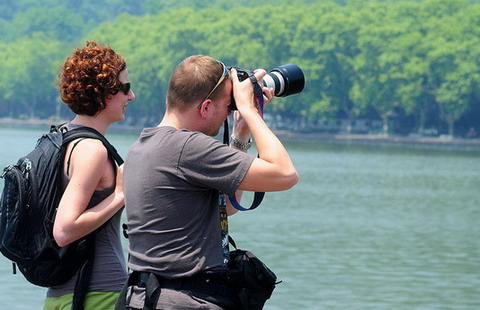Abe should open his eyes to reality
By Wang Ping (China Daily) Updated: 2014-07-10 07:26It was really a clumsy decision for Australia to move toward a de-facto military alliance with Japan after the latter violated its pacifist constitution. The US and its allies should learn from World War II, or else their wrong decisions will eventually hurt themselves.
On Tuesday, Japanese Prime Minister Shinzo Abe said the new defense technology agreement would be part of "engraving the special relationship" with Australia, and both countries would be "joining hands with the US". Abe's speech actually made Australia one of the central planks of Japan's security plan for the Asia-Pacific region.
Abe's cabinet adopted a resolution on July 1 reinterpreting Article 9 of the Constitution to lift the country's self-imposed ban on exercising collective self-defense. The move will not only shift Japan away from its postwar pacifist position, but also facilitate the strengthening of Japan-US alliance, which is wanting in military substance because of the restrictions of Article 9.
According to Article 9 of Japan's Constitution, "land, sea and air forces, as well as other war potential" of the country will never be maintained, and "the right of belligerency of the state will not be recognized". But the so-called peace treaty signed between Japan and Western countries, led by the United States, in San Francisco that came into force on April 28, 1952, said that Japan, recognized as a sovereign nation, possesses the inherent right of individual or collective self-defense referred to in Article 51 of the Charter of the United Nations. That clause does not conform to the constitutional restrictions that prevent Japan from arming itself again.
Signed on Sept 8, 1951, the Security Treaty between the US and Japan became effective in 1952 as the peace treaty, allowing the US to deploy its land, air and sea forces in Japan to protect it from armed attacks from outside and quell large-scale internal riots at the express request of the Japanese government.
The security treaty, however, remained ambiguous on how the US would protect Japan, which drove former Japanese prime minister Nobusuke Kishi to propose the extension of a revised security treaty. So on Jan 19, 1960, the Treaty of Mutual Cooperation and Security between the United States and Japan was signed. Among the most important changes in the new treaty is the one which says the US regards an armed attack on Japan as being dangerous to its own safety and would act to meet the common danger, and that the two parties will consult on how to implement the treaty, "whenever the security of Japan or international peace and security in the Far East is threatened". The security pact thus laid the basis for Japan to resume exercising collective self-defense.











